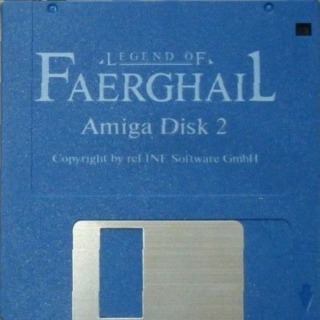
And remember that not everybody and everything you meet is an enemy you need to fight. Also the magic spells aren't all too complex, but creatures don't react in a same way to same spells, so there's some variety there. The interface is not very complicated, so the combat is very simplified, which probably won't appeal to more hard core oriented RPG gamers out there. This can happen in dungeons (and there are a few of those around) or in open field while walking around from one village to another. For instance if you want to expend your intelligence, you need to master the Stones of Wisdom. There are no skill points to gain instead you need to work on your skills by mastering certain parts. On different locations you'll get different perspectives (from 1st person motion through tunnels, to top down view of a village or countryside). Well, you are able of interacting with the exhibits and it's a feature later used in Waxworks, you need to enter exhibits and solve complete your task there before you can get any further.

The museum caretaker will only allow you to examine the certain exhibits and you need to gather enough experience (and find the appropriate coins) to examine the rest.Īnd where to find coins in the middle of the museum? You find yourself being welcomed at the Tarmalon Museum.
#Legend of faerghail review series
Let's say it's a series of quests within a broader frame.

It's a light RPG game with games within a game, with quests to complete and a special timeline. Legacy of the Ancients proves me wrong and I don't mind one bit. In my Buck Rodgers Countdown to Doomsday review I stated that it is the first RPG game that is based in the future instead of medieval fantasy world. I don't really like being wrong, but this game definitely proved me wrong. Your character is rated for dexterity, strength, charm, endurance and intelligence - skillful play will maximize these. You will have to fight using weapons and magic, gamble, and trade items. Your journey takes you through overlands, dungeons, towns, castles, oceans, pirate caves and inter-galactic museums to finally face the real threat to the world of Tarmalon. This role-playing game uses the same game engine as Questron. This begins the adventure in the race against time to destroy the evil scroll and those who wish to kill you to take its power for their own uses. It also offered the player the opportunity to continue their characters from previous games such as Phantasie I, III, The Bard's Tale and The Bard's Tale II: The Destiny Knight, although Faerghail does not take place in the same fictional world as these games.You are a simple shepherd in the world of Tarmalon who one day discovers a panic-driven dying man by the roadside who carries a strange leather bound scroll and a golden bracelet. The game world includes an overworld split by a mountain range, and eight dungeons. The game is viewed from first-person perspective. Characters have attributes (such as wisdom, strength and constitution), skills (such as pick-pocketing and various languages) and hit points. The player first creates a character by selecting race and class.

Legend of Faerghail is set in a medieval fantasy world. For example, a mage will lose concentration and fail at spellcasting if he stands too close to the enemy. The combat system requires the player to pay attention to the position of the characters in battle. The player explores towns, wilderness, and complex dungeons of the game from first-person perspective, fighting enemies in turn-based combat. Legend of Faerghail is a role-playing game with an interface similar to that of The Bard's Tale series.
#Legend of faerghail review software
Platforms: Amiga, Atari ST, MS-DOS Developer: Electronic Design Hannover Publisher: Rainbow Arts Software GmbH Year: 1990 Tags: Fantasy, Turn-based combat


 0 kommentar(er)
0 kommentar(er)
